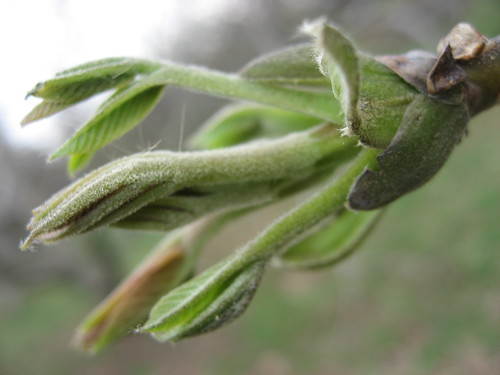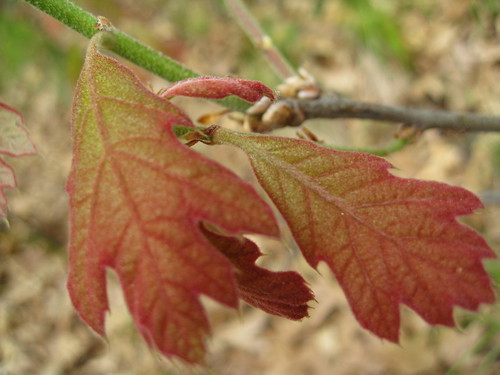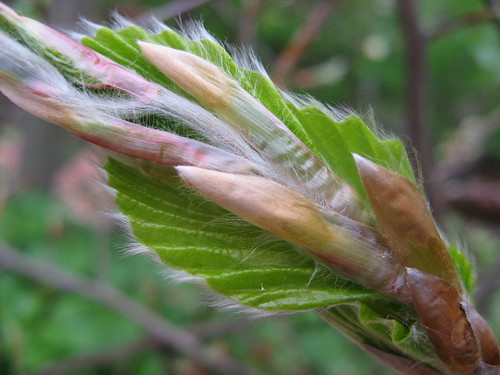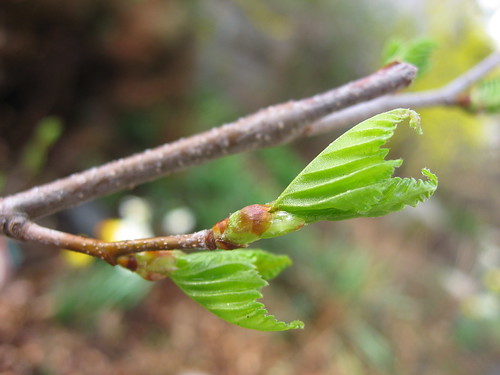
What's going on there? As the leaves assemble their photosynthetic apparatus there are a number of variables to consider. First and foremost, chlorophyll, the green pigment that initiates photosynthesis, is an expensive molecule to produce. Chlorophyll is a large molecule, but more important, its component parts are relatively rare and difficult for the plant to procure. The active part of chlorophyll, an assemblage of atoms called the porphyrin ring, is the focus. It contains four nitrogen atoms and at their center, a single atom of magnesium. Magnesium is a trace element and nitrogen, while abundant in its inert form in the atmosphere, is not abundant in the soil. In addition, nitrogen is needed for many other molecular roles in the plant, for example DNA, RNA, and proteins.
If you think about it, there are millions upon millions of chlorophyll molecules in each leaf. Consider the number of leaves on the tree and the amount of expensive molecular components needed for photosynthesis is mind boggling.
Consider also the many proteins that are involved in the photosynthetic process, proteins that bind to the chlorophyll, proteins that shuttle electrons back and forth during photosynthesis, and proteins that produce ATP, the energy currency of the cell, with the help of energy from sunlight. Proteins require massive amounts of nitrogen, and the molecular machinery that forms the proteins themselves is also nitrogen-rich. Again, more competition for available nitrogen.
Think about it. If the tree were to experience a late frost, the leaves and all their components would die, wasting the extensive resources that are found in each leaf. So the slow rate of "greening" each spring can be attributed to two things: 1) the slow rate of production of photosynthetic molecules (primarily chlorophyll and proteins), partly based on a scarcity of ingredients, and 2) an innate conservatism that favors the full development of the leaf's photosynthetic apparatus during a relatively risk-free time, once the possibility of frost has passed.




What a thought provoking post (and beautiful pics). It prompts me to rethink my reaction to a very late, hard freeze a few years ago that disrupted the blooming of a tulip magnolia tree in our yard. We were crestfallen to miss the magnificent “show” the tree typically provides each spring. But having read “The Greening”, I realize there’s much more to lament about winter’s late and unexpected return visit. All that wasted work. All that nitrogen! I wonder if the soil around a tree that has suffered a late freeze becomes unusually nitrogen rich when the tree’s stunted leaves and buds fall to the ground? If so, does the tree enjoy an added advantage the following year?
ReplyDelete(I will confess that we did not lament the results of that same late freeze on the female gingko tree in our yard. If you’ve ever been near a female gingko in the fall when it drops its fruit, you know why…)